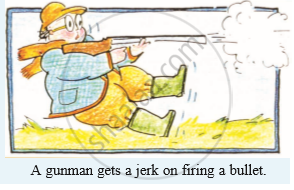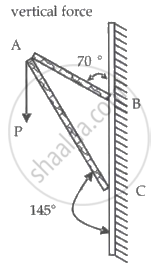Advertisements
Advertisements
प्रश्न
Do action and reaction act on the same body or different bodies ? How are they related in magnitude and direction ? Are they simultaneous or not ?
उत्तर
Action and reaction act on different bodies. The action and reaction forces are equal in magnitude but they do not always produce equal acceleration in the two bodies on which they act.
APPEARS IN
संबंधित प्रश्न
Using a horizontal force of 200 N, we intend to move a wooden cabinet across a floor at a constant velocity. What is the friction force that will be exerted on the cabinet?
According to the third law of motion, when we push on an object, the object pushes back on us with an equal and opposite force. If the object is a massive truck parked along the roadside, it will probably not move. A student justifies this by answering that the two opposite and equal forces cancel each other. Comment on this logic and explain why the truck does not move.
Is the following statement true or false :
A rocket can propel itself in a vacuum.
A girl weighing 25 kg stands on the tloor. She exerts a downward force of 250 N on the floor. What force does the floor exert on her ?
Why does a gunman get a jerk on firing a bullet ?
If a man jumps out from a boat, the boat moves backwards. Why ?
Explain why, when a fireman directs a powerful stream of water on a fire from a hose pipe, the hose pipe tends to go backward.
Complete a sentence and explain it.
The working of a rocket depends on Newton's ______ law of motion.
While catching a cricket ball the fielder lowers his hands backwards. Why?
Consider a frame that is made up of two thin massless rods AB and AC as shown in the figure. A vertical force `vec"P"` of magnitude 100 N is applied at point A of the frame.

Suppose the force is `vec"P"` resolved parallel to the arms AB and AC of the frame.
The magnitude of the resolved component along the arm AC is xN.
The value of x, to the nearest integer, is ______.
[Given: sin(35°) = 0.573, cos(35°) = 0.819, sin(110°) = 0.939, cos(110°) = –0.342]
